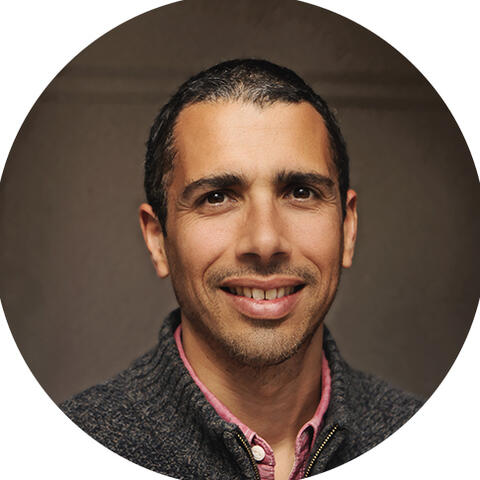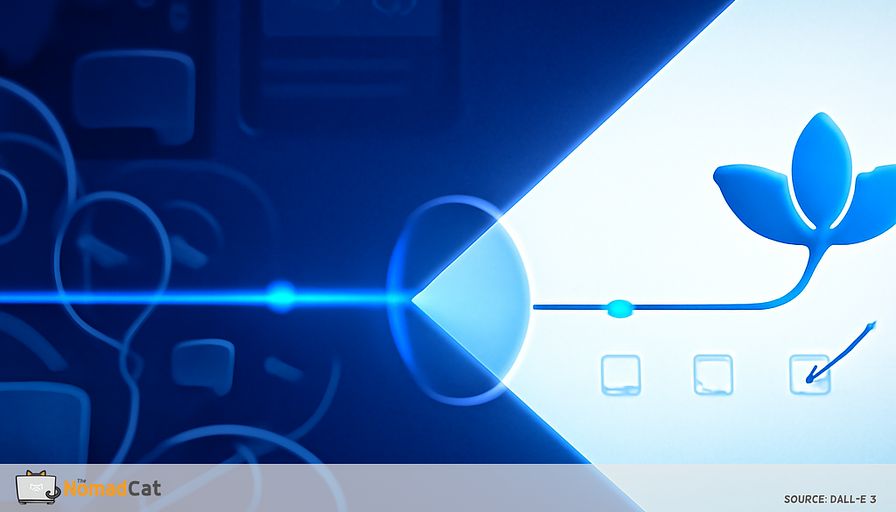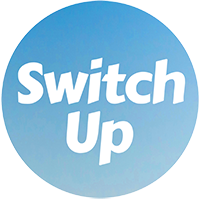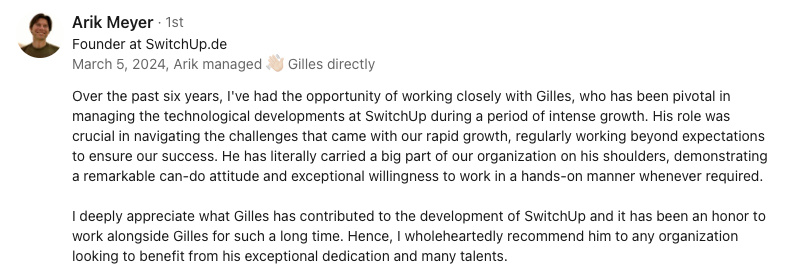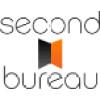Abstract:
The article emphasizes that in the tech industry, achieving standout positioning relies on radical simplicity—distilling your message into a clear, concise one-liner that is easily understood, remembered, and shared. Drawing on cognitive science and communication research, it explains how our brains prefer simple messages due to cognitive load limits, making straightforward statements more trustworthy and more likely to be repeated by others. The piece provides practical, actionable templates and exercises for crafting effective one-liners, such as “I help [audience] achieve [outcome] using [method],” and highlights the business benefits of this approach, including increased referrals, smoother networking, and higher visibility. Distinctive examples demonstrate the power of specificity, such as “I help SaaS teams double user retention with onboarding that delights and educates,” contrasting sharply with vague, jargon-filled alternatives. The article also guides readers through quick feedback methods—peer review, A/B testing, and public profile experimentation—to refine their statements, and underscores the importance of ongoing iteration, citing the evolution of messaging in major tech brands. With tools like the SUCCESs checklist and visual frameworks like Ikigai, readers are encouraged to focus on audience needs and outcomes, continually testing and optimizing their one-liner to ensure it resonates and remains effective as circumstances change.
Why radical simplicity wins in tech positioning
In my experience, standing out in tech depends on how simply and clearly I describe what I do. Long, jargon-filled messages fade away, but a short, direct sentence gets remembered, repeated, and can open real doors. Radical simplicity isn’t just a style—it’s the most reliable approach I’ve found for making my work stick in people’s minds.
I’ve learned firsthand why our brains love clear, concise messages, and how a single line can make what I offer easier to believe and share. In this article, I’ll share practical templates for crafting your own one-liner, tips for keeping your words sharp and specific, and easy ways to check if your statement works. You’ll see how clear positioning leads to more referrals and smoother introductions, plus a few quick exercises I use to refine my message without getting lost in the weeds.
If you want your tech positioning to be unforgettable—and make it easier for others to talk about you—radical simplicity can help. Here’s what happens when you keep things simple.
Why radical simplicity works
The science behind memorable messages
Short, clear messages stick because our brains like things simple. I’ve seen it over and over: cognitive load theory says our memory can only handle a few ideas at once, so a focused one-liner is more likely to be remembered. If I need to catch someone’s attention in a crowd or a busy inbox, a short message has a better chance. Communication research calls this the parsimony principle: less is better.
Simple statements are easier for others to repeat and share, so they work better than long explanations. Every day, people get bombarded with information, but a clear, single sentence can cut through the noise. Studies show that by cutting out unneeded words and sticking to the main point, my message becomes both clear and easier to act on or share. The simpler the message, the clearer the signal.
Simple language also builds trust. When I get straight to the point and skip jargon, people find my message more believable. I’ve noticed that people tend to trust what’s easy to understand. For example, when I say, “I help SaaS teams double user retention with onboarding that delights and educates,” it’s clear and sounds honest. If people quickly understand what I do and see the benefit, they take my message seriously. That’s how simple language makes my offer feel more credible.
Here’s how I’ve seen this work in practice.
Real impact of concise positioning
Easy-to-remember one-liners like “I help SaaS teams double user retention with onboarding that delights and educates” make it simple for others to remember me and refer my skills. When I sum up my niche in one line, people know exactly what I do and for whom. For example, when I worked with fintech startups, I’d say, “I help fintech startups automate compliance so they can scale faster.” This gave contacts a phrase they could easily use when introducing me. Clarity doesn’t just help people remember—it can mean more referrals and more business because passing my message is easy.
I’ve seen real business results from this. When I led a transformation plan as CTO in Berlin, simplifying our core message led to a measurable increase in qualified leads—almost double, in fact, after we switched to a clear one-liner. A short message grabs attention on platforms like LinkedIn or in crowded inboxes, getting me more visibility and better chances.
Simple statements also make networking smoother. If what I do is easy to explain, others will remember it and share it in conversations. If my message is short and easy to repeat, my contacts become helpers, introducing me to more people. It’s like gardening—trim the weeds, and suddenly the flowers stand out. Next, I’ll show you how I build a strong one-liner.
Write your one-liner
Templates for clarity
A strong one-line niche statement works well with a basic formula. One template I use: “I help [audience] achieve [outcome] using [method].” This covers who I help, what I deliver, and what’s special about my way. For example: “I help SaaS founders reduce churn with data-driven onboarding workshops.” Using this template keeps things clear right from the start and makes my statement easier for others to remember. If my work is more complex, I might expand a little, but I always aim for directness.
When I need more detail, I sometimes use Geoffrey Moore’s template: “For [target] who [need], [service] is a [category] that [benefit]. Unlike [competitor], [different thing].” This clears up who I help, their issue, what I provide, and how I stand out. For example, “For fintech startups who struggle with regulatory compliance, my platform is a SaaS tool that automates reporting. Unlike traditional consultants, it requires no manual input.” Extra detail can help me stand out in busy markets.
I remember pitching my science popularization company to investors in Paris. My first pitch was full of big words and clever metaphors, but I could see their eyes glazing over. When I switched to a single line—“We make science fun for kids, with hands-on kits delivered monthly”—suddenly, everyone nodded. Sometimes, I am still surprised how much a small word change can do.
If I need to figure out my audience, result, and method, diagrams like Ikigai or Value Proposition Canvas help. They show what I like, what I do well, what my audience wants, and how I deliver value. I sketch these bits on paper and look for points where they overlap. The best version often shows up where my strengths and audience needs meet. Still, even the best formula gets weaker when full of vague words, so I keep my language sharp.
Keep language simple and specific
Buzzwords or vague promises—like “I help businesses grow”—tend to be forgotten. Instead, I call out a clear audience and a real outcome. For example, “I help remote software teams launch bug-free releases” is much clearer. I use language anyone can understand, not just my peers.
I avoid stuffing my statement with technical words. I use simple, strong action verbs such as “build,” “launch,” “simplify,” or “grow.” This style makes my message easier for everyone. I always put my audience’s need at the center—that’s what makes my offer connect.
When I led that Berlin scale-up transformation, simplifying our message from “We deliver digital transformation solutions for enterprise clients” to “We help e-commerce teams launch new features in half the time” led to a 30% jump in qualified leads within a month. Numbers like that are hard to ignore.
Focusing on what the audience cares about, rather than only my own skills, makes my message more personal and likely to be shared. “Helping e-commerce founders triple their conversion rates” is more memorable than “I am a digital marketing expert.” If a message speaks directly to someone’s problem or goal, it often sticks. Once I have a version, I test it in real conversations or online—a little outside feedback matters most.
Test your one-liner
Fast feedback
A quick way to check if my one-liner works is to share it with peers for a fast review. I ask if it’s clear, memorable, and something they would repeat to someone else. Simple conversations spot problems in my message quickly, so I can adjust before sharing publicly. I also use online tools—a short group call or quick form might show me what’s working and what’s not.
If I want more structured feedback, surveys or polls on tools like Google Forms help. I show a couple versions of my statement and ask which is clearer. This lets me compare and see which works better. I also test in places like my LinkedIn headline for quick real-world results.
A/B testing works too: I try different versions as headlines or posts and watch if I get more profile views or replies. For instance, I post one version for a week, then switch and see what happens. Watching these numbers helps me see which message really works.
Signs your statement is resonating
Some signs show my new message is clicking:
- More profile views
- More connection requests or followers
- More people answering my messages
Good comments, people repeating my words, or people asking questions are also strong signals that my message works. The first time someone repeated my one-liner back to me, I nearly spilled my coffee. There’s a real mix of relief and excitement when you hear your words come back from someone else—like, finally, I’m not shouting into the void.
If I start hearing my statement used by others when introducing me, I know it’s hitting the mark. If not, I use the feedback and tweak again. It can feel a little awkward at first, but the payoff is worth it.
Why ongoing tweaks matter
Updating and improving my one-liner isn’t just a one-off task. Even small changes can make people react differently to my message. Over time, refining my words brings more visits to my profile, better conversations, and sometimes surprise introductions. These small updates often make a simple one-liner work much better.
Keep refining your one-liner
Why personal iteration matters
I’ve learned that the best results come from putting my statement out there, testing it, and improving it with real feedback. Adjusting my message keeps it sharp, clear, and effective—no matter how things around me change.
I don’t need to think like a big brand to do this. As an independent tech professional, I’ve found that regular updates are a sign of a thoughtful approach, not indecision. Sometimes, I’ll tweak a single word and suddenly people “get it.” Other times, it takes a few tries. The important thing is to keep at it.
To keep improving my line, I use a simple checklist.
Quick checklist for a sticky statement
A good one-liner is simple and focused on the audience. To spot weak spots, I use a checklist like the SUCCESs framework:
- Under 20 words?
- No jargon or buzzwords?
- Target audience named?
- Outcome clear and easy to understand?
- Would someone from outside my field get it?
I test my statement with someone who’s not in my industry—that’s the fastest way to check if it works.
If a friend or family member can repeat my one-liner after hearing it just once, I’m on a good path. Testing with non-experts is the best clarity test. A fast peer review or short survey helps me fine-tune before putting my statement out there.
Quick exercises to draft your one-liner
Draft a strong one-liner in 10 minutes
A short, focused session helps me write a good first version. I set a timer for 10 minutes and follow these steps:
- Note my target audience.
- Write down their main problem.
- Define the benefit or result.
- List what’s special about my way.
I put them together in a line: “I help [audience] achieve [outcome] using [method].” I write a few versions and see which feels best. I’m often surprised by what comes up quickly.
Compare, refine, and pick your best version
Drafting a few versions helps me spot what works. I try three different templates—one simple, one using Moore’s template, and one with a two-sentence style. I use a checklist to compare:
- Is it clear and specific?
- Does it include audience and outcome?
- Is it short and jargon-free?
I pick the version that’s easiest to remember and feels right for my audience. Once I choose, I use it in the real world and see what feedback comes back.
Simple prompts for real-world A/B testing
Get fast feedback from trusted contacts
A/B testing can be as easy as sending two versions to friends or peers. I ask which one feels clearer or more interesting, and get their suggestions. Honest answers help me see which version works best. I’ll say: “Hi, I’m working on a new one-liner. Which of these feels clearer or stronger to you? Any ideas for improvement?”
Test your statement in public profiles
I try my statement as my headline on LinkedIn or in a Twitter bio. I watch which version brings more profile views, likes, or messages. Curiosity and follow-up questions mean my message connects. This way, I keep improving and reach more of the right people.
Radical simplicity isn’t just a quick fix for messaging—it’s been a big help for my own tech positioning. By focusing on clear, specific one-liners, it’s become easier for people to remember what I do, refer me, and trust my skills. Studies show our brains like short, direct statements. Testing my message in real conversations has shown me that simple messages travel far. Changing my approach with feedback keeps my position sharp, even when things shift. For anyone who wants to stand out, removing jargon and focusing on what matters to the audience can make a real difference. Try keeping it simple—sometimes, the smallest word changes have the greatest effect.
